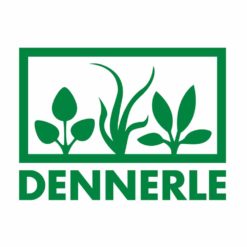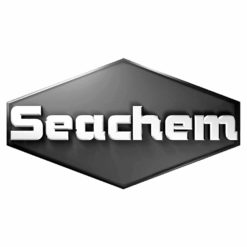Akadama Soil
R620 – R696
- Fast Delivery
- 100% Safe & Secure Shopping
- Shipping all across South Africa
- All Prices Include VAT
- Peace of mind Quality
Akadama Soil – Double Red Line Soil
The soil is perfect for any aquarium. However, many shrimp/discuss breeders mostly use Akadama to lower the pH. This soil does not release ammonia and can be added to your tank to keep a constant pH.
3 Bag sizes to choose from (2L, 5L, 14L).
- 2L
- 5L
- 14L
3 Granule sizes to choose from:
- Fine (1mm-3mm)
- Small (3mm-5mm)
- Medium (5mm-8mm)
Background
When it comes to shrimp or for that matter fish breeding, creating the perfect water parameters is a must. The most important water parameter is pH, closely followed by ammonia and nitrites. If shrimp do not have the correct pH, they will unfortunately slowly die over time. So every shrimp keeper and breeder needs to keep a very close eye on pH!
The challenge
The biggest problem with keeping aquatic livestock is understanding that even if the water from the tap has a certain pH, the ecosystem in your aquarium or tank has an equilibrium of where your water parameters equalize. By adding tap, rain or borehole water to your tank or aquarium with the right pH means nothing if your ecosystem changes this.
What is “Equilibrium?”
Each tank has its own equilibrium. Most aquarists use chemicals (pH uppers or downers) that they add to the water. This can be extremely dangerous. What they don’t realize is that this is only a temporary change. These changes also create inconsistencies in other water parameters. For an example KH, GH and TDS which are also important for your shrimp and fish survival rates.
Stability
When it comes to shrimp breeding, consistency is key. You need to keep everything as stable as possible, especially pH. Shrimp are very sensitive to changes in water parameters. Therefore, by adding products (pH uppers or downers) that alters not one, but most of your water parameters, you create a nightmare for yourself when you try to balance everything. These changes and inconsistencies cause more shrimp to die than just leaving them at the incorrect pH.
The ideal pH
Neocaridina Shrimp
pH of 7 – 8.5
Caridina Shrimp
pH of 5.5 – 7
Most aquariums with an inert substrate (a gravel that does not change the water parameters like silica sand or most gravel you buy from most aquarium stores) will equalize your aquariums pH at around 8 – 8.5. This is relatively acceptable for Neocaridina shrimp and hardy fish but not for Caridina shrimp or more sensitive fish like discus. They require a much lower pH.
Why Akadama Soil?
Stable pH for up to 3 years
Using a product like Akadama Soil lowers the pH of your aquarium and keeps it constant without having a severe effect on your KH, GH and TDS. This creates a much better and safer environment for your shrimp if you only change one water parameter and it keeps it there for as long as 3 years.
Lowers pH
Akadama can also be used for Discus and many other fish that require a lower pH. The more Akadama you add the lower your pH will be. For neocaridina shrimp a 250ml cup of akadama should be enough to drop your pH as far 0.2 – 1 on the pH scale. For caridina shrimp a 2cm layer of substrate will be sufficient to give you a desired pH of between 6 and 7. It is important to always measure the pH a week after you have added substrate to your tank or aquarium.
Its natural
One of the best things about akadama is that it’s a natural product and does not leach anything into the water.
It basically just changes your pH, making it by far the safest product to use. You do get other aquarium substrates that you can use, but akadama is by far the cheapest and safest option for any new or experienced person in the hobby.

Other products like ADA Amazonia, Dennerle Scapers soil and AquaEl Helps Advanced soil also work great for shrimp, but they come at a hefty price and usually release ammonia in your water for up to 4 weeks which is toxic to your livestock. The only benefit they have above Akadama is that they might contain other trace elements. These elements are truly negligible and may not justify the pricetag of these Akadama alternatives.
pH buffering
The effect Akadama Soil has on pH is called buffering (lowering the pH). This buffering effect lasts between 1 – 3 years, but this will change from tank to tank as every tank is used differently. Doing water changes, adding fertilizer for plant growth, adding food for your shrimp/fish, gravel vacuuming your tank and many other factors has an impact on the duration of the buffering effect. Another important factor is the quality of Akadama, the harder the better (Bonsai Tree provides the hardest and highest quality Ibaraki Akadama)
What size is best?
Akadama comes in different size granules, those of interest to us is the fine (1-3mm) and small (3-5mm). I have used the fine as I prefer its appearance and the shrimplets can’t enter or hide in the substrate, although other users are equally happy with the small. Its my opinion that the fine particle size also reduces the chance of food particles being stuck in my substrate and creating anaerobic pockets. The double red line Akadama is recommended as some users have experienced problems with cheaper, softer versions.
Conclusion
As one of the largest shrimp breeders in South Africa, I can truly recommend Akadama.
- It lowers the pH
- Does not release anything dangerous into the water
- Is extremely cost effective.
- Its a good-looking substrate too, making colours like green really pop.
| Size (2L - 14L) |
2L Fine (1-3mm) ,5L Fine (1-3mm) ,14L Fine (1-3mm) ,2L Small (3-5mm) ,5L Small (3-5mm) ,14L Small (3-5mm) ,2L Medium (5-8mm) ,5L Medium (5-8mm) ,14L Medium (5-8mm) |
|---|
2 reviews for Akadama Soil
Clear filtersOnly logged in customers who have purchased this product may leave a review.

















Verified owner mmiiaaggrrooeenn (verified owner) –
LOVE this! I paired it with JBL – Manado. My plants are growing so fast I’m running out of tank space haha! I used to struggle growing plants and this has completely restored my confidence!
Verified owner Neil Norval (verified owner) –
Keeps pH really low and leaches no ammonia at start up! Great soil for Caridina shrimp, but requires a good long wash